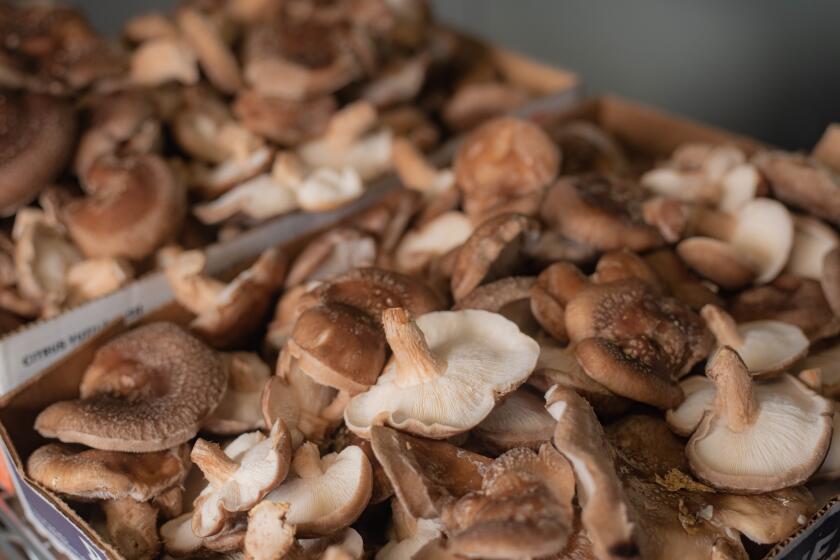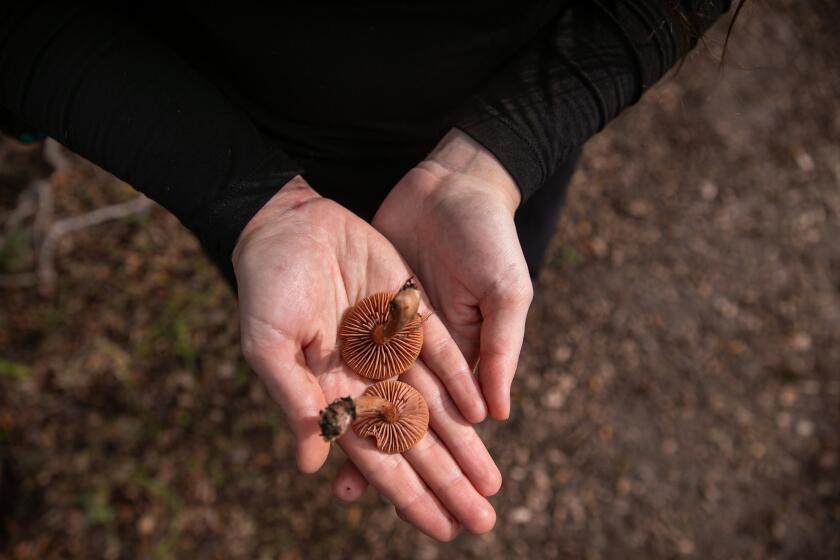(Danie Drankwalter / For The Times; typography by Selina Saldivar / For The Times)
- Share via
What does nature’s song sound like? You might think burbling brooks, buzzing bees, chirping birds. But for creators at the forefront of experimental tech that lets them make music with mushrooms, nature sounds like the otherworldly boops and beeps of a synthesizer.
Musician and former biologist Tarun Nayar never expected his throwaway TikTok videos playing around with the phenomenon called biodata sonification to go viral. He started out by hooking plants up to a modular synth to transform their bioelectrical signals into electronic music. The tech works on any living organism, from flowers to apples to human beings. But it’s the hypnotic tone of mushrooms currently spreading like spores.
“It’s a beautiful practice of connecting and collaborating with nature,” Nayar says of the niche new genre of music that has earned him more than 730,000 followers on TikTok. His most popular mushroom music videos have tens of millions of views. “It demonstrates, in a very immediate way, how mushrooms are alive like we are alive.”
To be clear, the mushrooms aren’t making the music themselves, or deliberately choosing which notes we hear (as far as we know). The devices only translate biological processes into frequencies we can turn into music. But the popularity of mushroom music speaks to a larger cultural wave inspired by these mysterious organisms that have remained in the shadows for far too long.
“Fungi are certainly having a moment,” says Merlin Sheldrake, biologist and writer of the seminal book “Entangled Life: How Fungi Make Our Worlds, Change Our Minds and Shape Our Futures.”
The online fascination with fungi’s funky beats comes on the heels of the scientific community’s desire to further understand their many mystifying wonders. For centuries, we were blind to the vast, underground fungal networks that cover our planet, and ignorant of the pivotal role they play in our ecosystems. We overlooked fungi’s biological complexity — which is more similar to animals’ than flora‘s.
But technology like microscopes, big data and now biodata sonification are “opening us up to their hidden world,” Sheldrake says, by giving us “access to their activity” that could usher in a new era of exciting discoveries. In its current state, biodata sonification has limited scientific use, since “we don’t know what these electrical fluctuations say about fungal life.” Yet Sheldrake remains hopeful that, with more time and research, this kind of biodata sonification can one day become reliable enough for empirical application.
The artistic interpretations of these curious data streams are significant as well. They add yet another layer to this mushrooming moment in human history.
Tune in, turn on and drop out
Mycologist Giuliana Furci, founder of the nonprofit Fungi Foundation, which focuses on fungal exploration and conservation, loves how the accessible, universal language of music can bring everyday people closer to these mind-blowing organisms. The devices can sonify, for example, the electrical impulses that underground fungal networks emit as they nourish the ecosystems they support through a forest’s root systems.
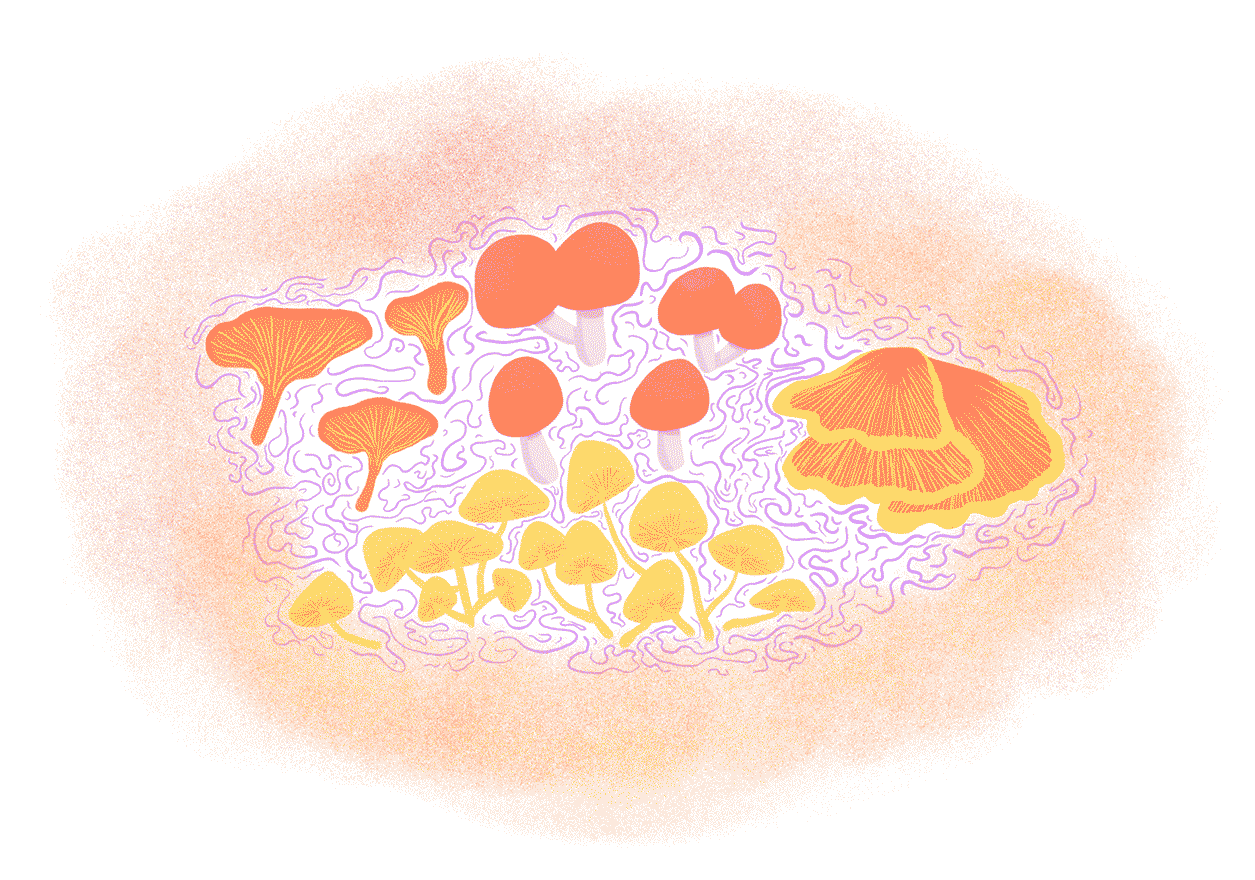
For the record:
1:32 p.m. Feb. 1, 2023The first name of musician Noa Kalos was misspelled Noah in an earlier version of this story.
The mushroom’s central role in a hotly debated theory known as the “Wood Wide Web” — which argues that trees talk to each other through fungal networks known as the “internet of the woods” or “forest communicators” — parallels their online ascension, says musician Noa Kalos who goes by MycoLyco to her roughly 700,000 TikTok followers. It’s almost poetic that humanity’s own information networks are spreading interest in fungus. “A lot of the gatekeeping and mycophobia around mushrooms has fallen away thanks to social media,” says Kalos, referring to how it’s opened up knowledge of the fungi kingdom to regular people, not just mushroom experts. Fungi-loving influencers like Gabrielle Cerberville (known as chaoticforager, or TikTok’s “mushroom auntie”), for example, gained 1 million followers by teaching beginners how to embrace rather than fear engaging with mushrooms in the wild.
Growing mushrooms at home is more complicated than buying soil and seeds, but very doable with the help of premade kits. Here are expert tips on mushroom care.
“We’ve seen a significant change in mushroom culture over the last two years,” says Kalos. “Every aspect of mushrooms has captured the imagination of pop culture.” Last May, Kalos even played her music at designer Stella McCartney’s fashion show, which debuted a new line of sustainability-focused mushroom leather bags.
McCartney wasn’t the first human to utilize mushrooms as material for clothing. For hundreds of years people around the world used fungi-based materials, like the suede-like amadou in Transylvania and mycelial textiles in Indigenous North America. And more recently mushrooms can be found in home decor, coffee at hip L.A. cafes, skincare and supplements.
In part, we can trace fungi’s cultural renaissance back to the resurgence of interest in magic mushrooms, or psilocybin, for both medicinal and recreational purposes. But as more artists across a variety of mediums start to plug into the fungi kingdom, it seems like something deeper is going on.
“Fungi provide very fertile metaphors for artists and thinkers,” Sheldrake says. “It’s such an alien way of life. That otherness, that strangeness is hugely inspiring when we let it affect us. Because it reminds us of all the ways there are to be alive, provides us a basis for new ways of thinking about our organization, relationships, collaboration, competition.”
As the fungal mindset begins to crop up in more places, it raises a heady if seemingly ridiculous question: Are mushrooms conscious? Is their cultural takeover somehow deliberate? “There’s a not-so-inside joke among those involved with mushrooms, which is that they’re just using us,” Nayar laughs. “I am now fully being utilized by fungi to spread mushrooms.”
It may sound laughable, but the question of fungal consciousness has caused genuine divides in the scientific community. Over the past decade, some botanists and neurobiologists have suggested evidence for plant consciousness in their research — sparking criticism and finger-wagging from others who insist plants don’t have feelings. When it comes to mushrooms, biologist Sheldrake and mycologist Furci agree: Fungi are intelligent in their own way. They deliberately adapt their behaviors based on information they process from an active awareness of their environment. “Whether or not you attribute that to consciousness depends on your definition of the word,” says Furci. “It’s not the same as our consciousness. And that’s what people struggle to understand.”
There’s potential in the unknown
HBO’s “The Last of Us” recently drew record-breaking audience numbers with its premise of an apocalyptic pandemic caused by fungi turning humans into zombies. Clearly, the idea of fungal consciousness spreading inspires fear in some. But mushrooms’ rise in popularity during our real-world pandemic speaks to a far more optimistic side of their symbolic meaning. “Right now, after witnessing so much collective death, mushrooms also represent life after death to us,” Nayar says.
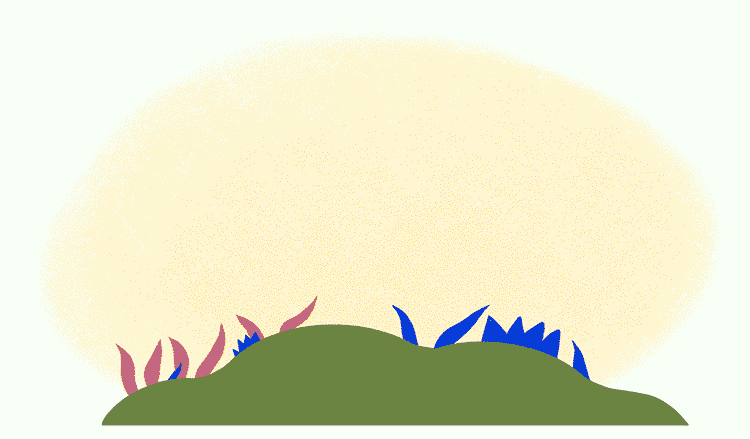
Our wave of interest in fungi may be sprouting from their potential to “help us adapt to life on a damaged planet,” Sheldrake says, describing them as “poster organisms for ecological thinking.” As Furci points out, “We only know about 5% to 10% of Earth’s fungal species, and they’ve already shaped so much of our world.” They’ve given us penicillin, alternatives to meat, the yeast in bread, beer, wine, cheese. “Imagine what the other 90% could offer in terms of nature-based solutions.”
The potential of the almighty mushroom isn’t just a metaphor for rebirth. “The promise of unlocking their unknowns brings us hope,” Furci says.
It’s all in the vibes
The trend of synthed-up mushrooms is only the most recent example of fungi’s storied relationship with music. Indigenous elders instructed Furci’s team to give music back to the forest in exchange for the mushrooms they took while researching in the fields of southern Chile. Meanwhile, research into high-voltage shockwaves seems to echo Japanese folktales about how lightning multiplies shiitake harvests. Despite mushrooms’ lack of auditory organs, scientists continue to find evidence of just how much impact sound can have on various species of fungi. One study even theorized that the electrical impulses captured by these biodata sonification devices can be understood as a type of fungus language.
Yet some mycologists remain skeptical about this alleged relationship between music and mushrooms. John Cage, a late, great co-founder of the New York Mycological Society, famously said that the only connection between the two was their proximity in the dictionary, Furci recalls.
The best tips and tricks for identifying and responsibly gathering fungi in the wild.
Sheldrake also questions the scientific accuracy of the sonification devices commonly used in these viral videos and how musicians anthropomorphize mushrooms. Rudimentary setups can only measure the organism’s galvanic response, or to put that in layman’s terms, “how easily electricity can flow through something,” Kalos explains. The more accessible devices can be susceptible to electromagnetic noise and interference too. Artists may also heavily manipulate the sounds to make them more pleasing to the human ear.
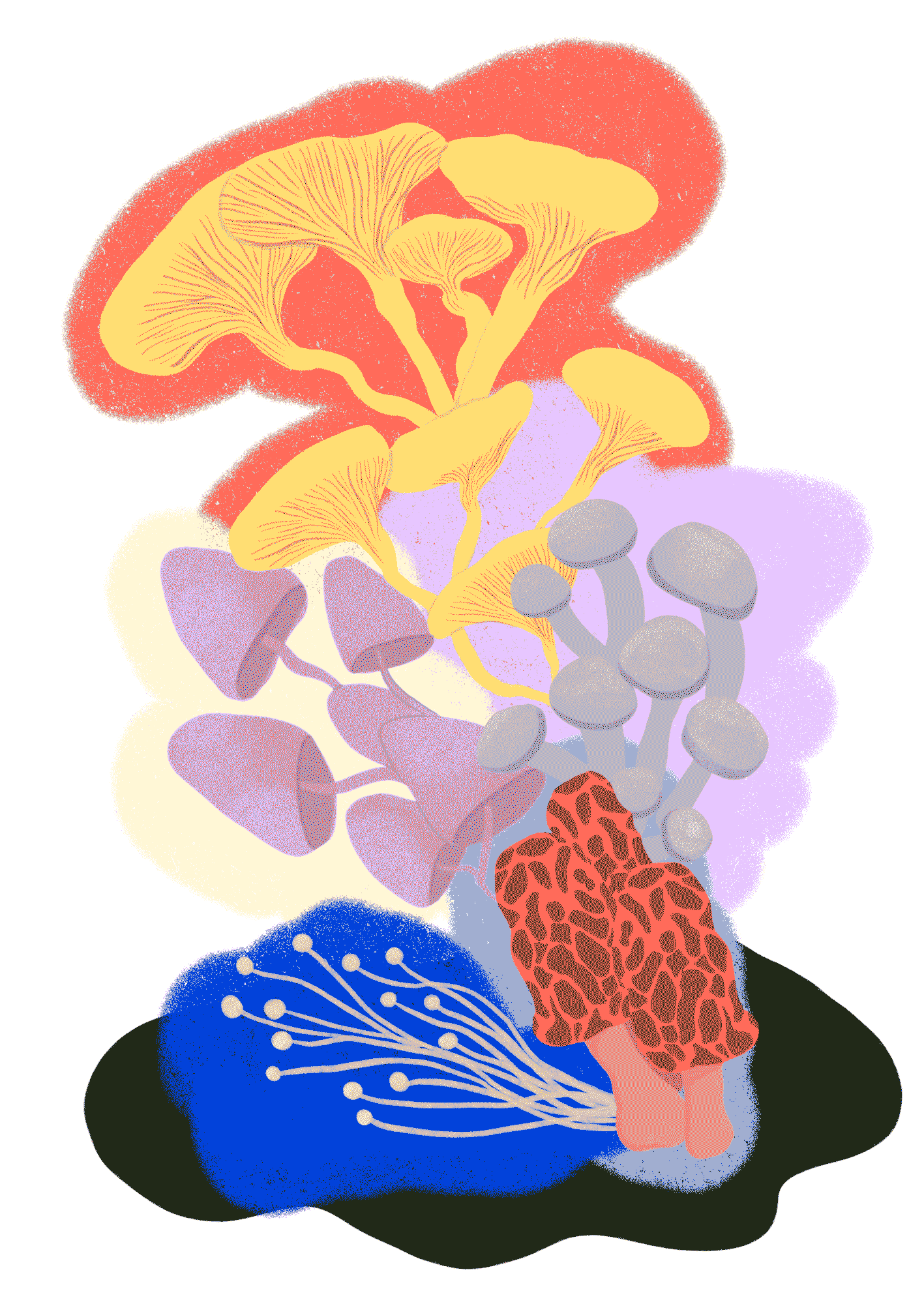
This new genre of artistic collaboration with nature is in its nascent stages, Nayar admits. But the best way to unlock its full potential, he believes, is to encourage as many people as possible to experiment, to “conjure up these moments of wonder that hopefully connect us back to the natural world, and ultimately to ourselves.” The experience can often be funny, precisely because we understand so little. To him, that’s just as important as the moments of spiritual awe. “This is like one big, fun, science-oriented group project,” he says.
Kalos finds meaning in how this practice requires a certain “releasing of the ego, of creative control.” She picks the notes, while the mushroom’s electrical signals determine the order they go in. During live performances, this can result in a groovy soundscape suddenly transforming into “absolute garbage” because of an unpredictable change. “It’s about embracing the entropy, the chaos, the random — and working with it to create stuff that’s constantly evolving in its own way.”
More to Read
Sign up for The Wild
We’ll help you find the best places to hike, bike and run, as well as the perfect silent spots for meditation and yoga.
You may occasionally receive promotional content from the Los Angeles Times.

